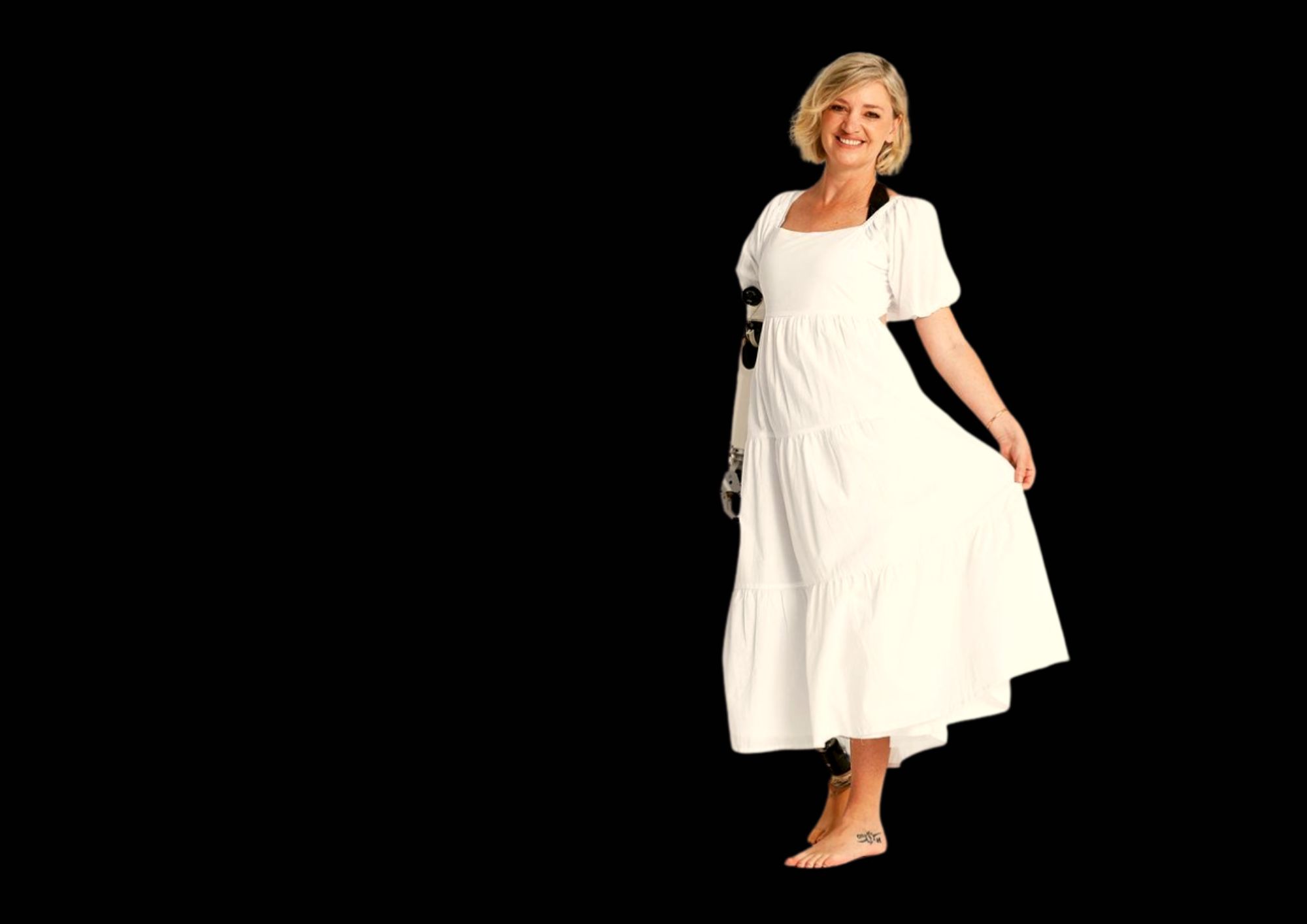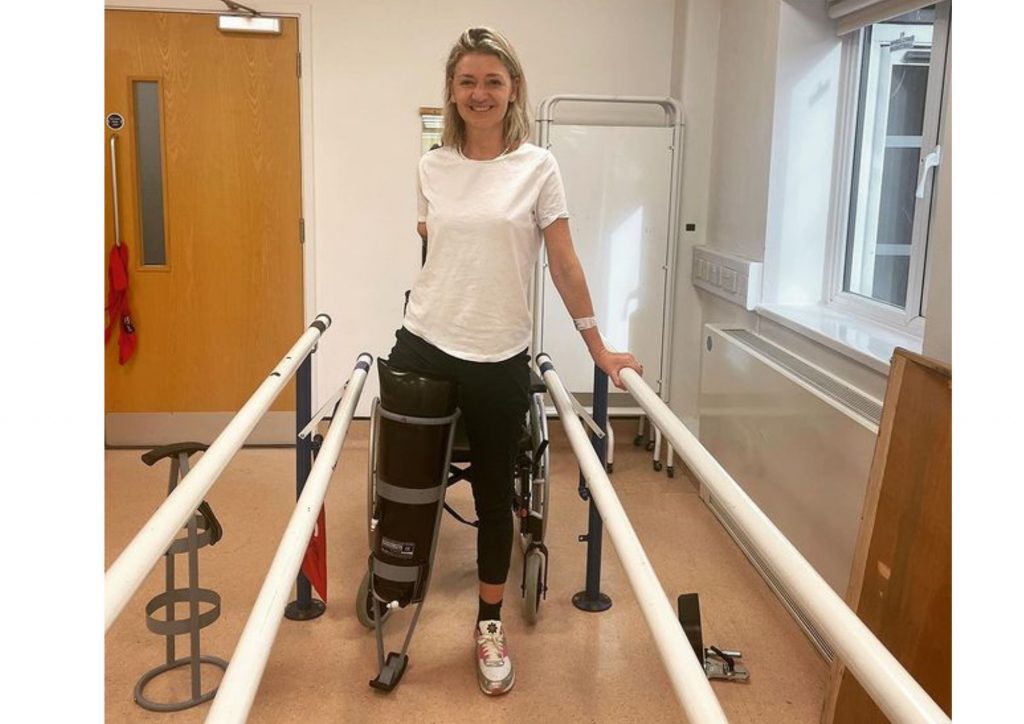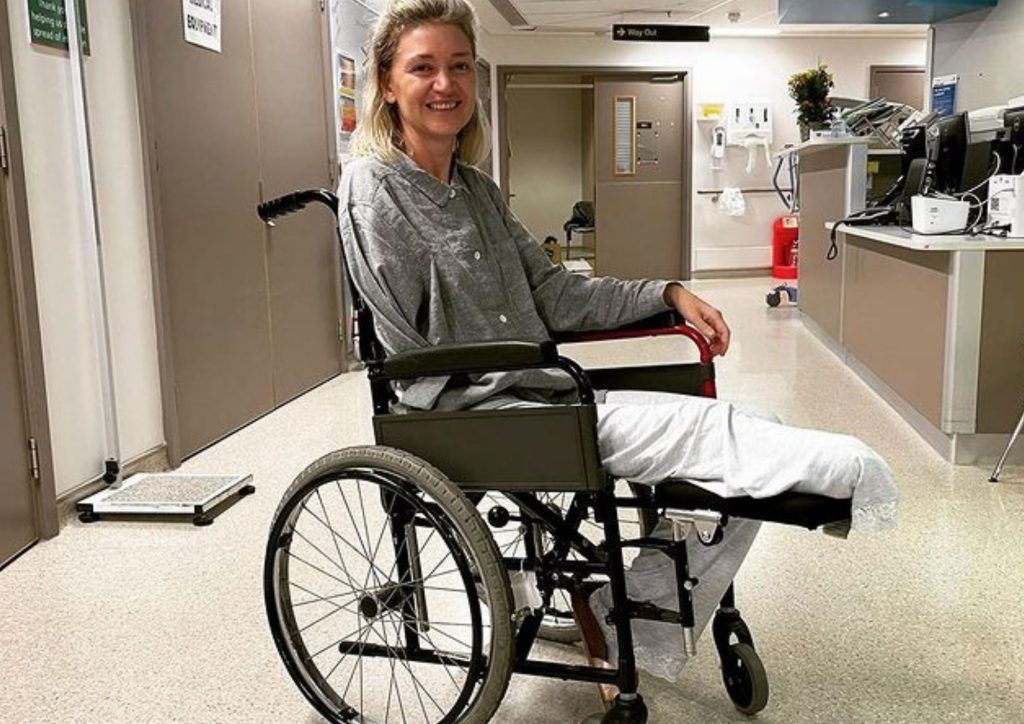Miracle survivor of tube tracks horror gets ready for extraordinary bionic arm
Sarah de Lagarde was run over by two trains
Friday, 16th June 2023 — By Tom Foot

Sarah de Lagarde with her current prosthetic arm and leg [Georgia Shane for Light London]
SARAH de Lagarde – who describes herself as “80 per cent human, 20 per cent robot” – lost a leg and an arm after being run over by two northern line tube trains.
Nine months after the ordeal the Camden Town mother is eagerly awaiting next week when she will be fitted with a bionic arm and hand with working fingers that can be commanded by impulses from the brain.
It is the first time a prosthetic limb of this kind, powered by artificial intelligence, has been used in this country and it follows an extraordinary £300,000 fund-raising appeal online – which we first reported on our front page back in December.
While there has been Doomsday warnings about the future of AI (Artificial Intelligence) in recent weeks, Ms de Lagarde said this week she was living proof that tech could change lives for the better.
She told the New Journal: “Inside it has a whole bunch of electrodes that are strategically placed to capture muscle movements. “When I twitch my muscles it sends signals to a server that is fitted in the elbow. That converts those signals into impulses that will make my hand work. It’s hard to explain but what happens is I think about a movement – say ‘open my hand’ – and my muscles twitch in a particular way.
“There are two muscle groups that control the elbow, forearm, wrist and fingers. The five fingers on the arm, I will be able to move them independently.
“But the real beauty of it is the artificial intelligence built into it. The arm can learn how to record my most frequent movements. If it finds that I point my finger often, it will learn that I like to do that and make it easier for me to do so.
“They tell me it could take a lifetime to master the arm. But I will be in control of it. It is a new world – and it is fascinating.”
She added: “There is a lot of angst about AI taking control of our lives, but in this case, it actually is going to completely enhance my life. AI – it’s not all bad.”

The road to recovery for Sarah de Lagarde
Ms de Lagarde said she was excited about the coming days but also aware that she could feel frustrated if she finds she cannot master it immediately, adding: “Fingers crossed, on my left hand at least, the arm will not look enormous next to my small build. That’s one concern I have: that the robotic hand is going to be bigger than the arm. I hope I don’t look like I have a giant arm.
“My kids find it hilarious that I am going to have to take my arm off at night and charge it in a USB plug like they do with their phones.”
Ms de Lagarde said she was looking forward to being able to cut up a steak at a restaurant dinner again, tying her own hair, and a host of other “every day things”.
She has in recent weeks been practising working the tech through a “slightly strange looking” set-up involving electrodes that are attached to her shoulder and work with software installed in a mobile phone game app, called Simon Says.
“When I have tried to make the commands it takes a lot of concentration – you have to think about it a lot – and I get tired,” she said.
“What you don’t think about is how all our movements are innate. For example, when you start to drive you are really careful about everything and are hyper concentrating – and it’s exhausting. But fast forward many years and you can do it in your sleep.”
The bionic hand has been created by Leeds-based firm, Covvi, while the other parts for the prosthetic have been developed by experts in countries all over the world in an “international effort to get everything assembled”.
Her new arm is costing more than £100,000 – and there are further costs including hardware, training and physio.

Sarah de Lagarde has documented both the highs and lows, and says she still has feelings of anxiety
The New Journal was first to report how a fundraising appeal was launched in support of Ms de Lagarde after her horrific accident last September. It quickly snowballed with the national publicity which followed.
After falling asleep on the tube after work and missing her stop at Camden Town, she woke up at the end of the Northern line at High Barnet.
Disorientated, she went to board a return train but slipped and fell under the carriage, breaking her nose, teeth and damaging her face in the fall. Unable to get up, she could not escape the train as it pulled away over her, causing horrific injuries.
She cried out for help for more than ten minutes but no one could hear her, until a second train rolled into the station crushing her again. Somehow surviving, she was airlifted to hospital where her leg and arm was amputated.
She has spent months training with alternative prosthetic arms – one she wears now that she describes as “a bit storm trooper” – and a leg, before she is fitted with the AI arm at the end of the month.
“I don’t know how I survived this but I’m so glad I did,” she said this week.
But Ms de Lagarde added it was important that people did not just think she was ok. Her public profile on social media includes photos of her crying in deeply personal moments, alongside the happy moments with her family and a beaming smile.

Sarah de Lagarde says AI can be a force for good [Georgia Shane for Light London]
She said: “80 per cent of the time I’m feeling ok. I accept the accident happened and I don’t dwell on the past. I don’t want my children to see their mum being depressed and not leaving the house. But at the same time, I really really struggle – for the other 20 per cent. I cry, I feel sorry for myself. It’s the small things that get you.
“And I have feelings of anxiety. What am I going to look like when I am old? The prosthetic has to be renewed every two or three years. What if I run out of money? “And I am terrified to go back onto the tube network. Mainly, because nothing has changed. TfL has not done anything. Look at the Elizabeth line – you can’t fall down the gap there because of the screens. Why is it not the same with all the tube lines?
“What they have done at the Elizabeth line is a kind of acknowledgement in a way that things could be better. Then there is CCTV not being in real time. Lighting wise, it’s very dark on the tracks.
“There could be motion sensors. Of course it is about money, but there are lots of things they could do.”
Before her accident, Ms de Lagarde had conquered Mount Kilimanjaro with her husband in a dream trip years in the making. She spoke about how she had felt at the top of the world one minute, only to be calling out for help in excruciating pain from the cold, wet and dark tube tracks the next.
In April, she went to Portugal with her family and climbed the country’s third highest mountain,
“It was about a three hour hike and it was quite hot with amazing scenery, Madeira is just so beautiful,” she said.
“I felt elated to get to the top. I managed to reclaim a small part of me back. But my ultimate goal is to now go back to Kilimanjaro.”